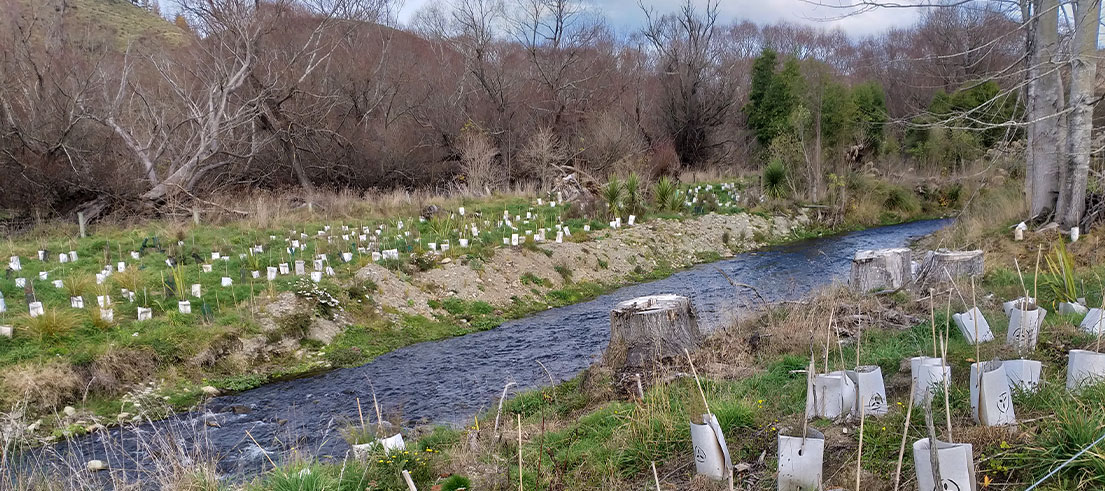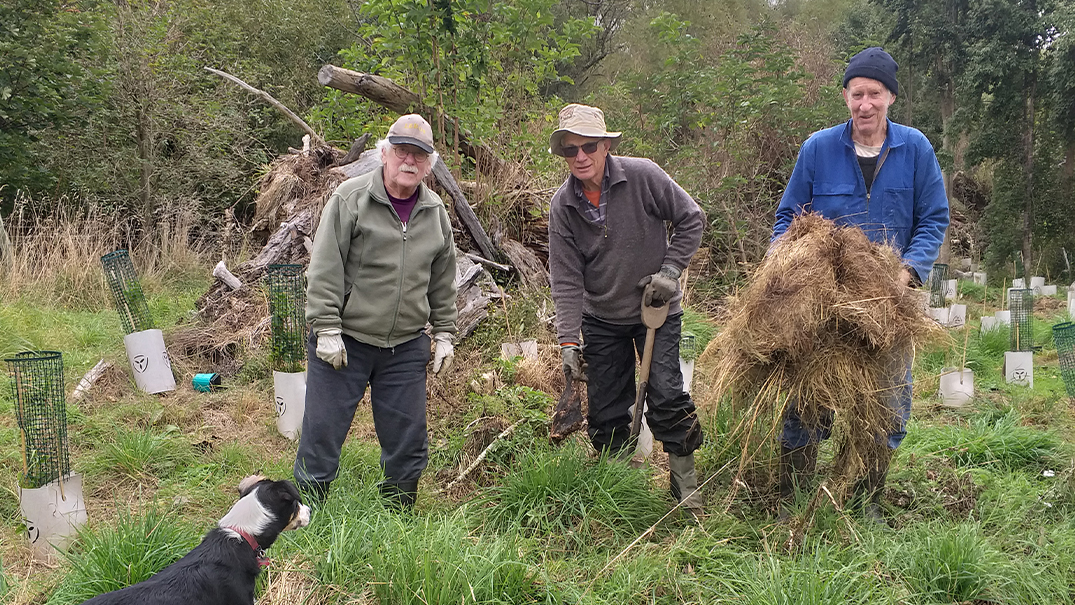
Restoration project at Te Kopi-O-Te Ōpihi/Burkes Pass takes shape
A major restoration project at Te Kopi-O-Te Ōpihi/Burkes Pass is making great progress, following the clearing of willows and planting of natives.
The work, supported by the Ōrāri Temuka Ōpihi Pareora (OTOP) Water Zone Committee, will eventually transform a stretch of the upper Ōpihi River adjacent to the Burkes Pass township, restoring an ecosystem and enhancing the natural character of the area. A new public walking track along the banks of the main river is also planned and will extend the existing Burkes Pass Heritage Walk by an extra kilometre.
The site has significant cultural value for mana whenua as it was once used as a major travel route and was an important place for gathering kai and resources.
Last year, the OTOP Water Zone Committee supported the project with more than $13,800 of its action plan budget, and now more funding is being considered.
Neighbourly inspiration
The project will be completed in stages and is a joint effort between Te Kete Tipuranga o Huirapa Ltd (Arowhenua Native Nursery), the Burkes Pass Heritage Trust, and Headley Greene Farm.
Founding member of the Trust and Headley Green Farm owner, Jane Batchelor, is particularly passionate about the restoration as it borders her land. Jane and her husband Graham have spent 35 years establishing native bush on their property and this new work will complement that mahi.
"The established trees, shrubs, and grassland on my farm provide a vision of what other areas could look like in 35 years."
Recent achievements
Key work completed since spring 2022 includes clearing willows from about half the overall 3.4 hectare site and the planting of an additional 1,600 natives - equipped with protectors to keep the rabbits off.
The plants are sourced though both the Arowhenua Native Nursery and the Burkes Pass Heritage Trust Nursery.
"We've planted quite a bit of the raw shingle banks that have been eroded in recent times. We've used grasses and flaxes and other appropriate plantings that will hopefully help stabilise the riverbanks."
The willow clearance has created a large pile of logs that now need to be disposed of. It's hoped the smaller logs can be mulched and spread around plants for weed control, while the larger ones could be used for plant shelter.
Jane said other planned work includes predator control, water quality monitoring, and fencing.
"On the eastern side, there is already a boundary fence between Aires Station and the project area, but we would like to upgrade that and put rabbit-proof netting along the length of it.
"On the western side, we need to upgrade the stock-proofing and install some sheep netting, just to make sure we don't get any stray sheep nibbling on plants. So that’s going to be a major expense."
A history lesson
Jane said the joint nature of the project and its significance to Te Rūnanga o Arowhenua make it particularly special.
"I'm thrilled to see this restoration work take a leap forward while learning so much about the area's history along the way. It's also a chance for our community to understand more about the site’s precolonial era."
Lex Evans from Arowhenua Native Nursery agreed, saying the planned new walking track will provide visitors with an opportunity to enjoy the natural beauty of the area and learn about its cultural significance.
He said projects like this are important for preserving and enhancing our natural and cultural heritage.
"As the work continues, restoration efforts will create a healthier and more vibrant ecosystem for future generations."

